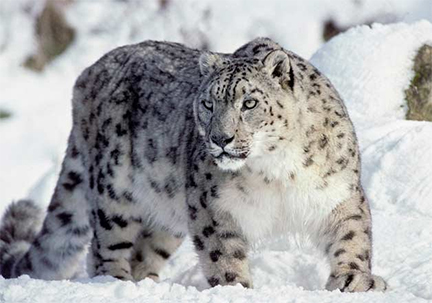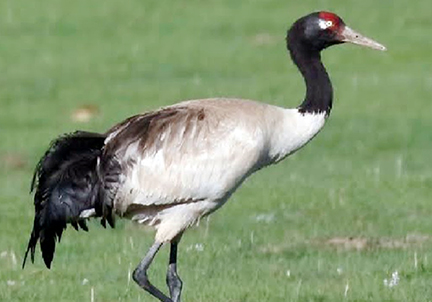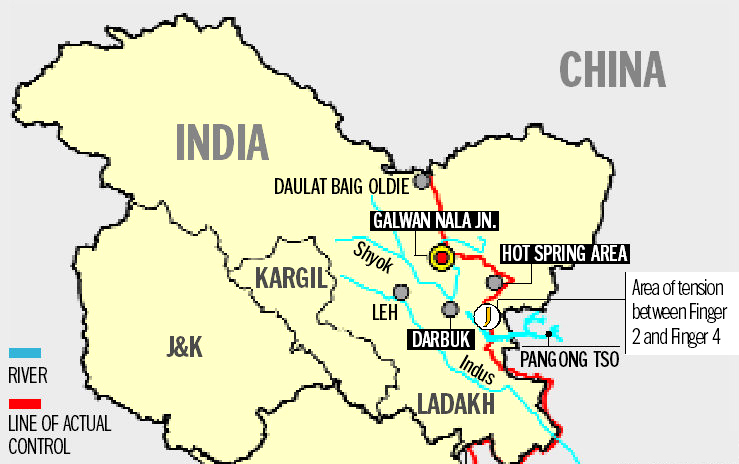Biodiversity & Environment
State Animal and Bird: Ladakh
- 03 Sep 2021
- 4 min read
Why in News
Recently, Ladakh has adopted Snow Leopard and Black-Necked Crane, as State animal and State bird, two years after it was carved out as a separate Union Territory (UT) from the erstwhile State of J&K (Jammu and Kashmir).
Key Points
- Snow Leopard:
- About:

- Snow leopards (Panthera uncia) act as an indicator of the health of the mountain ecosystem in which they live, due to their position as the top predator in the food web.
- Habitat:
- Mountainous regions of central and southern Asia. In India, their geographical range encompasses:
- Western Himalayas: Jammu and Kashmir, Himachal Pradesh.
- Eastern Himalayas: Uttarakhand and Sikkim and Arunachal Pradesh.
- Snow Leopard capital of the world: Hemis, Ladakh.
- Hemis National Park is the biggest national park in India and also has a good presence of Snow Leopard.
- Mountainous regions of central and southern Asia. In India, their geographical range encompasses:
- Threats:
- Reduction in prey populations.
- Illegal poaching and increased human population infiltration into the species habitat.
- Illegal trade of wildlife parts and products.
- Protection Status:
- IUCN: Vulnerable.
- CITES: Appendix I
- Wildlife (Protection) Act 1972: Schedule I
- It is also listed in the Convention on Migratory Species (CMS), affording the highest conservation status to the species, both globally and in India.
- About:
- Black-Necked Crane:

- About:
- The black-necked crane (Grus nigricollis), also known as Tibetan crane, is a large bird and medium-sized crane.
- Both the sexes are almost of the same size but male is slightly bigger than female.
- A conspicuous red crown adorns the head.
- Habitat:
- The high altitude wetlands of the Tibetan plateau, Sichuan (China), and eastern Ladakh (India) are the main breeding ground of the species; the birds spend winter at lower altitudes.
- In Bhutan and Arunachal Pradesh, it only comes during the winters.
- Threats:
- Damage to the eggs and chicks, caused by feral dogs.
- Loss of habitat due to human pressure (Development Projects) on the wetlands.
- Increased grazing pressure on the limited pastures near the wetlands.
- Protection Status:
- IUCN Red List: Near Threatened
- CITES: Appendix I
- Indian Wildlife (Protection) Act, 1972: Schedule I
- About:
Ladakh
- It was established as a Union Territory (UT) of India on 31st October 2019, following the enactment of the Jammu and Kashmir Reorganization Act.
- Before that, it was part of the Jammu and Kashmir state.
- It is the largest and the second least populous union territory of India.
- It extends from the Siachen Glacier in the Karakoram Range to the north to the main Great Himalayas to the south.
- The eastern end, consisting of the uninhabited Aksai Chin Plains, is claimed by the Indian Government as part of Ladakh, and has been under Chinese control since 1962.
- The largest town in Ladakh is Leh, followed by Kargil, each of which headquarters a district.
- The Leh district contains the Indus, Shyok and Nubra river valleys.
- The Kargil district contains the Suru, Dras and Zanskar river valleys.
- Earlier, in 2020 Indian and Chinese troops were engaged in a temporary and short duration face-off along the Line of Actual Control (LAC) at Naku La (Sikkim) and near Pangong Tso Lake (Eastern Ladakh).
- However, recently India and China have agreed in principle to disengage at a key patrol point in eastern Ladakh.





